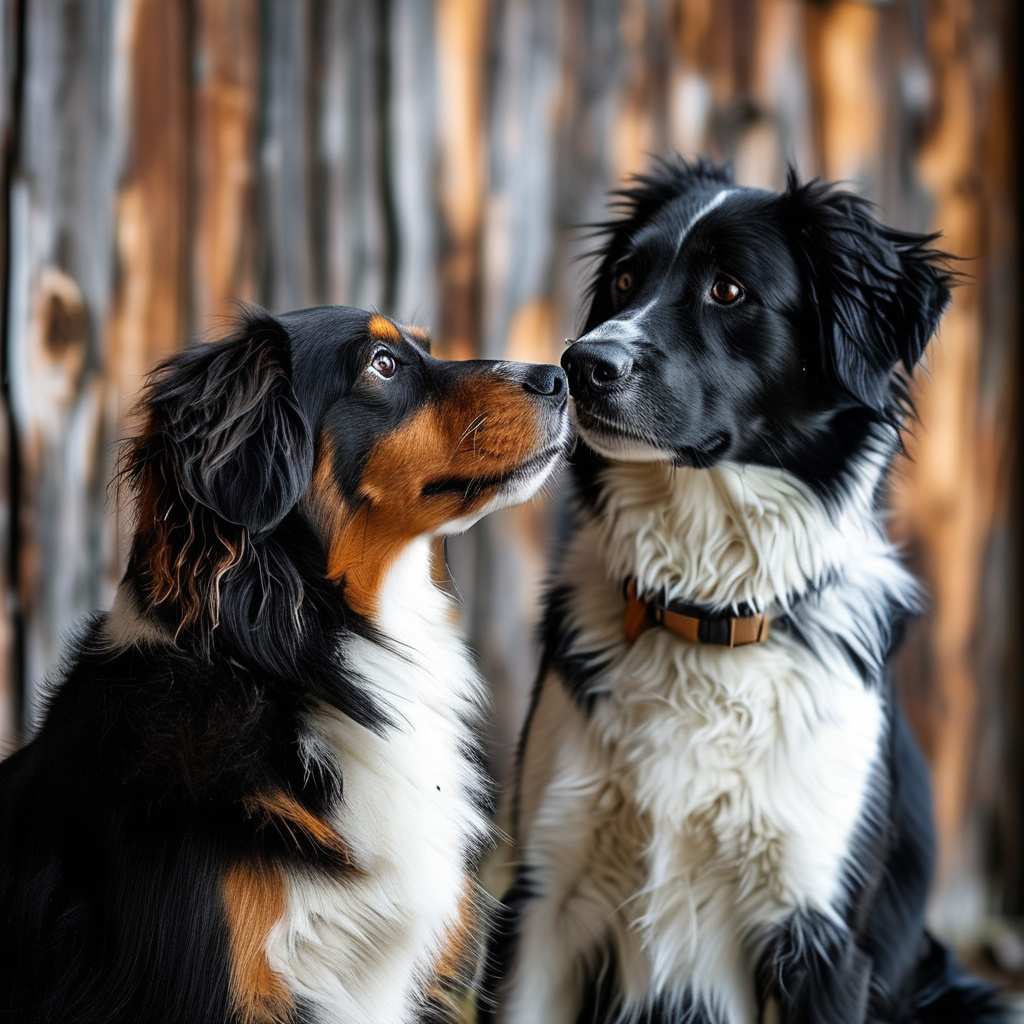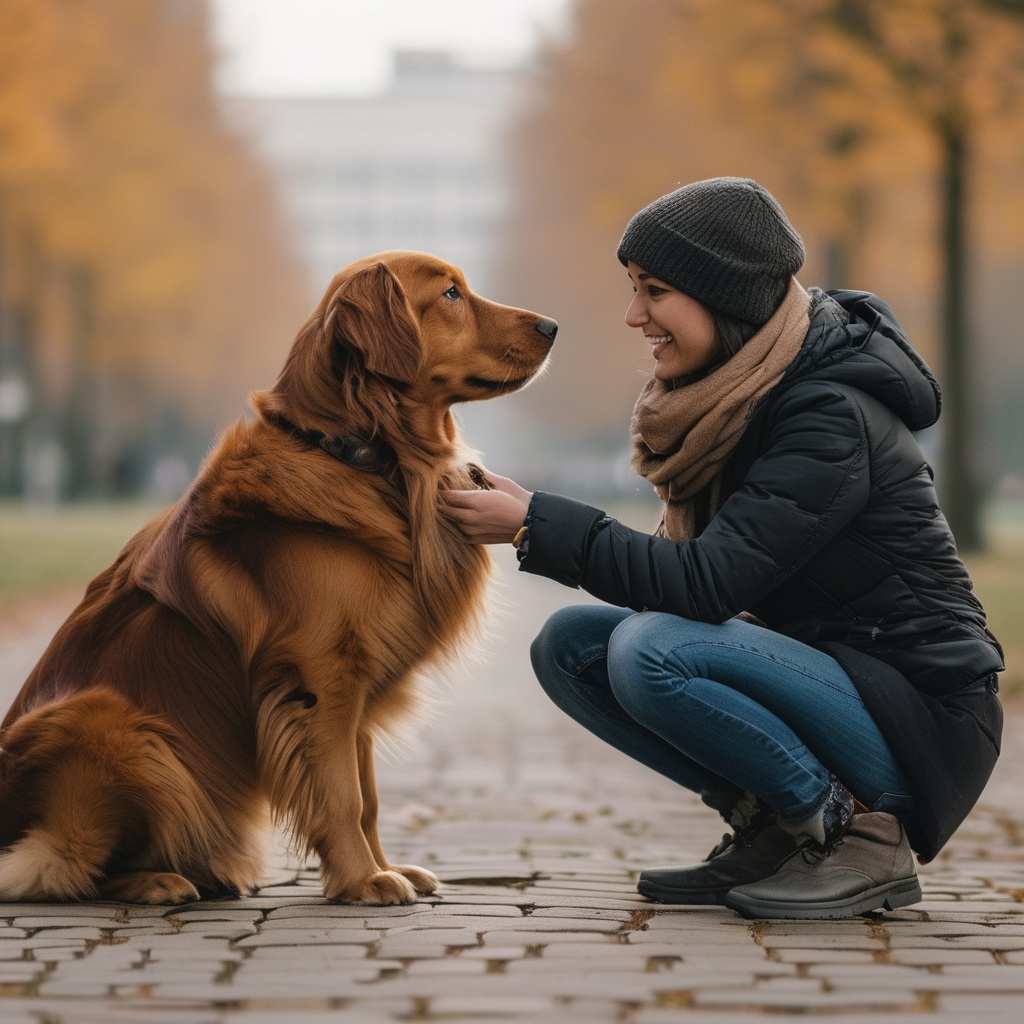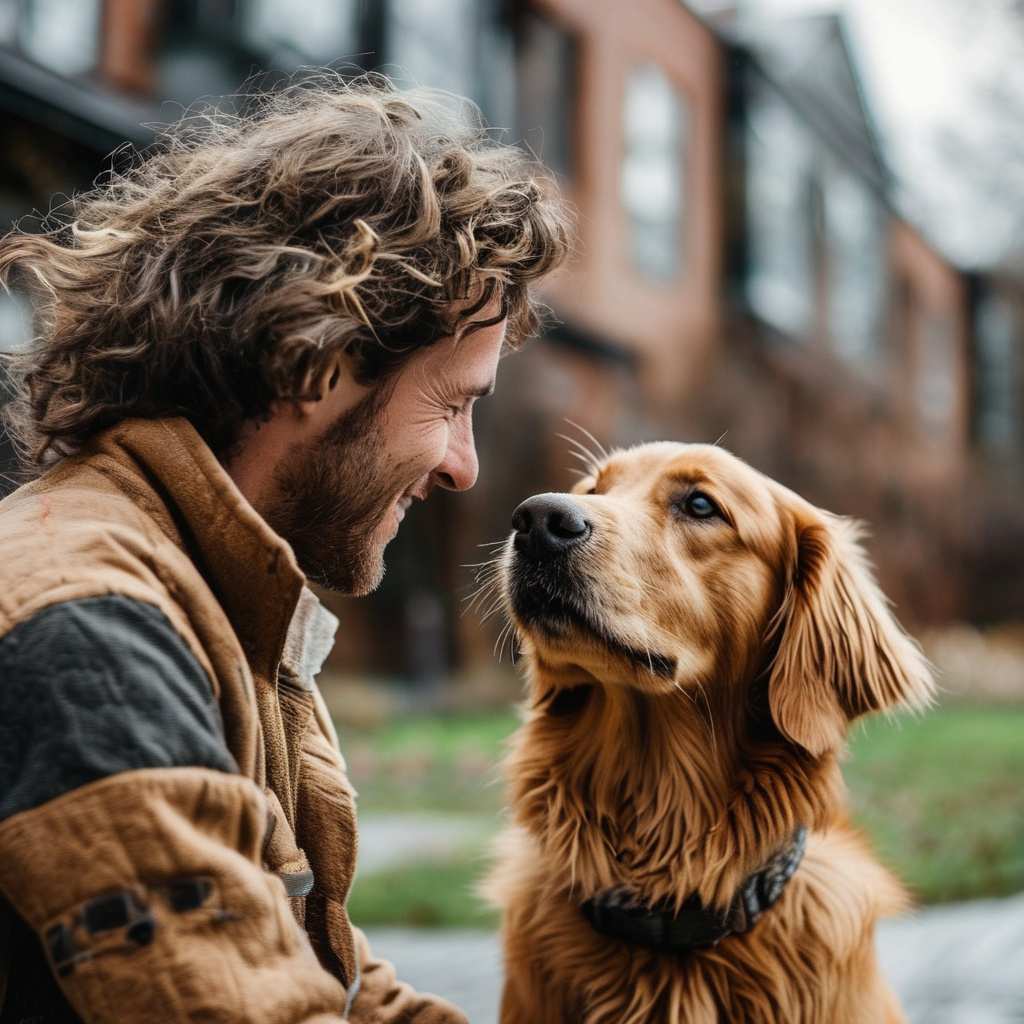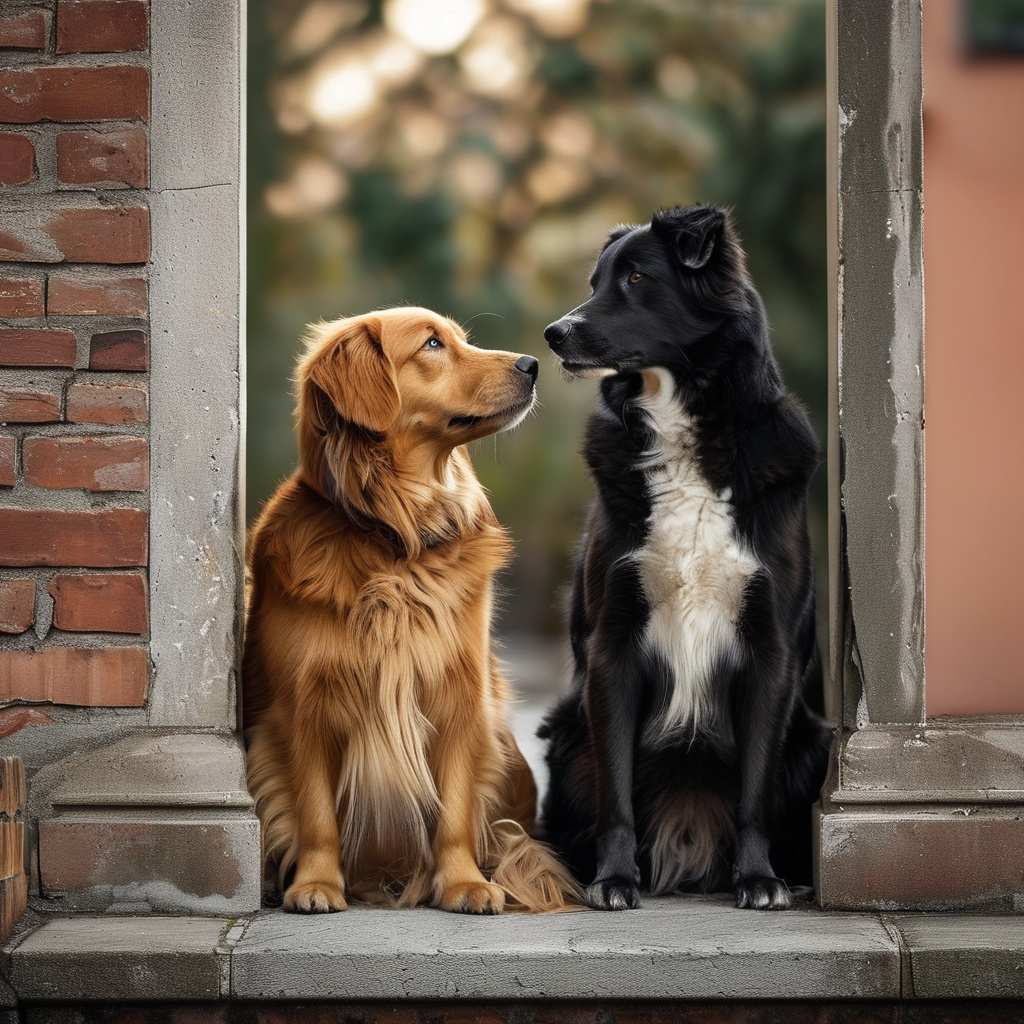Introduction:
Trust is the cornerstone of any meaningful relationship, especially between humans and their canine companions. Both dogs and humans are social beings who thrive on communication and bonding. Establishing trust with a dog requires patience, care, and positive interactions, all of which contribute to a deep and lasting connection. Whether grooming, engaging in play, or offering calming touch, these small but meaningful actions pave the way for a harmonious relationship. This article explores simple yet impactful ways to nurture trust and build a strong, affectionate bond with your dog.
 Trust is the foundation of a good relationship with any animal. The bond between handler and dog can be very strong, and the animal is treated as an equal member of the family. When a new client comes to us, they must have the time and conditions to trust us and feel safe with us.
Trust is the foundation of a good relationship with any animal. The bond between handler and dog can be very strong, and the animal is treated as an equal member of the family. When a new client comes to us, they must have the time and conditions to trust us and feel safe with us.
Related Post: How to Manage Your Dog’s Hair Loss: Practical Tips for Reducing Shedding
Both dogs and humans are social creatures, forming social relationships, bonds, and close relationships. The ease of communication and bonding depends on your dog’s previous experiences and history. Influencing factors include, but are not limited to
The age of the dog,
The amount of time spent together,
The intensity of positive signals from both parties.
Related Post: Catnip and Feline Euphoria: A Closer Look at the Science Behind the Magic Herb
 If you adopt a puppy that has been properly socialized with its mother and the rest of its litter, it will be easiest. Complications or difficulties may arise if we adopt a puppy that has not received proper primary and secondary socialization or a dog that has received negative stimuli from people or has been abused. In such cases, building trust will take much more time and effort, but it will certainly bring much satisfaction in the future.
If you adopt a puppy that has been properly socialized with its mother and the rest of its litter, it will be easiest. Complications or difficulties may arise if we adopt a puppy that has not received proper primary and secondary socialization or a dog that has received negative stimuli from people or has been abused. In such cases, building trust will take much more time and effort, but it will certainly bring much satisfaction in the future.
What can you do to establish and maintain close contact with your dog to build trust?
There are several simple ways.
First grooming. Grooming activities are an opportunity to express closeness and connection not only between humans and dogs but also with other species. Get your pet used to being combed, for example, and regular grooming will strengthen the relationship between dog and human. Rewarding correct behaviour with toys or treats will reinforce positive associations.
Related Post: Understanding Cat Diarrhoea: Causes, Remedies, and When to Seek Help
 Touch is also important. Stroking or scratching your dog will certainly make him happy. Of course, the type of petting should be adapted to the animal’s preferences. Especially with a dog, after a walk, you should be aware of possible aversions to touching certain parts of the body. It is necessary to create positive associations and rebuild trust in humans, but you cannot force the dog to allow you to touch where it was beaten or where it had a collar. Everything must be done in moderation. At this point, stress reduction is worth mentioning. Talking calmly to your dog, petting him, and rewarding him with the correct, expected responses can help reduce tension.
Touch is also important. Stroking or scratching your dog will certainly make him happy. Of course, the type of petting should be adapted to the animal’s preferences. Especially with a dog, after a walk, you should be aware of possible aversions to touching certain parts of the body. It is necessary to create positive associations and rebuild trust in humans, but you cannot force the dog to allow you to touch where it was beaten or where it had a collar. Everything must be done in moderation. At this point, stress reduction is worth mentioning. Talking calmly to your dog, petting him, and rewarding him with the correct, expected responses can help reduce tension.
Fun is also important in building relationships. Every animal has a need for exercise and energy. Otherwise, the dog may accumulate negative emotions and, in the absence of the handler, destroy the home’s furnishings out of stress. To improve your dog’s well-being and prevent unwanted behaviours, it is worth providing the right amount of exercise, outdoor play, exploration of different areas and accompanying smells. Everyone needs this, even the smallest dog. It is definitely not enough to just let a small dog out on the lawn alone to meet its physiological needs. If you have any doubts about how long or how much exercise a particular dog needs, consult your veterinarian. Depending on the animal’s health, he or she will recommend the amount of exercise and type of play needed for the particular patient. If there is a behavioural disorder that the caregiver cannot handle alone, an animal behaviour specialist should be consulted.
Related Post: The Power of Cuddling: Building Bonds Between Humans and Animals
The relationship between humans and dogs is a two-way street. How does a dog show trust?
From the dog’s point of view, it is fairly easy to read behaviours that express affection and love. You will usually observe the following.
Desire to touch,
Licking,
Snout touching,
Interest in what the caregiver is doing,
Extensive greeting rituals.
Dogs encourage fun,
Bringing in pet supplies
 Adopting playful body language
Adopting playful body language
Animals also accompany their caregivers in their daily activities and often want to sleep in the same bed.
The above examples are the beginning of a good, lasting and strong relationship. People also benefit from a positive relationship with their dog. Being around your dog can reduce stress, lower blood pressure, and help you relax. People who have dogs are also more physically active than those who don’t because of the need for walks. These are just some of the benefits of caring for your dog. Especially when adopting a dog from a shelter or foundation, a new mutual relationship, even if it is laborious, can improve the quality of life not only for the owner but, more importantly, it can change the life of the dog.
Conclusion:
Building trust with a dog is a rewarding process that benefits both the dog and the owner. From providing exercise and socialization to understanding and respecting your dog’s boundaries, each interaction strengthens your connection. A dog’s trust is shown through affection, loyalty, and companionship, and fostering this bond can enhance the well-being of both parties. Whether you are adopting a shelter dog or raising a puppy, the effort invested in building trust can lead to a relationship filled with mutual respect, love, and happiness.
FAQs:
- How can I build trust with my dog?
You can build trust through consistent positive interactions like grooming, play, and gentle touch. Being patient and respecting your dog’s boundaries is key. - What are some signs that my dog trusts me?
Signs of trust include wanting to be close to you, licking, touching with their snout, and displaying playful behavior such as bringing toys or adopting a playful posture. - Why is exercise important for my dog’s behavior?
Exercise helps reduce stress, prevents destructive behavior, and allows your dog to release energy in a healthy way. Regular outdoor play strengthens the bond between you and your dog. - What should I do if my dog is fearful of touch?
If your dog is uncomfortable with touch, especially in areas where they may have experienced trauma, start slowly. Gradually introduce positive associations through gentle, non-invasive interactions. - Can grooming really help strengthen the bond with my dog?
Yes, grooming can be a bonding experience that reinforces trust. Regular grooming, paired with rewards, helps your dog associate the process with positive feelings. - How does adopting a shelter dog differ in terms of building trust?
Adopting a shelter dog may require more time and patience to build trust, especially if the dog has experienced trauma or neglect. However, the bond formed can be incredibly rewarding. - What role does a veterinarian or behavior specialist play in building trust?
Veterinarians can advise on appropriate exercise and care routines, while behavior specialists can help address any specific issues, ensuring a healthy relationship built on trust and understanding.
References:
- Building Trust with Your New Dog – Humane Society
- How to Build a Strong Bond with Your Dog – Cesar Millan
- Building Trust with Your Dog – American Kennel Club
- Building Trust with Your Dog – PetMD
- Trust and Bonding – RSPCA
- Trust and Bonding with Dogs – Dogs Trust
- Building Trust with Your Pet – American Humane
